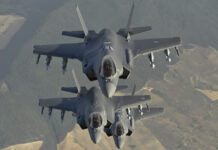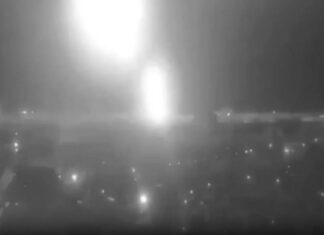The U.S. State Department through the Bureau of International Narcotics and Law Enforcement Affairs’ Office of Aviation (INL/A) is responsible for the curtailment of the supply of illegal drugs from foreign sources into the United States through aerial eradication of drug crops, interdiction of refining laboratories and trafficking activities, and other enforcement operations as directed by the Secretary of State. The Bureau’s “air wing” operates 348 fixed wing and rotary wing aircraft, involved in INL counter-narcotics aviation programs in Colombia, Peru, Bolivia, Guatemala, Pakistan, and Afghanistan. Operations are conducted with close cooperation with host nations U.S. Embassy Narcotics Affairs Sections and the Host Government police and military organizations, conducting training and support local operational activities.
LIght attack aircraft are already operational and have been used in combat in Latin America, as seen in this 2007 video clip, showing what looks like a coordinated pursuit by a ‘host nation’ EMB-314 Tucano, (could be Columbian, Peruvian,or from Guatemala – all are countries the U.S. actively suports in counter-narcotics programs) guided by a U.S. surveillance aircraft, hunting a twin-engine Cessna KIng Air on a drug interdiction mission near the Columbian border.
INL’s Air Wing has recently established an aviation support element in Guatemala, operating four Huey-II helicopters. The helicopters are staffed by Guatemalan Air Force aviators and technical personnel and supported by INL Air Wing technical advisors. The mission of the Aviation Support Project (ASP) is to provide dedicated air support for law enforcement operations, including “take-downs” on suspected trafficker aircraft, raids on transshipment points or clandestine runways, serving warrants, supporting ground interdiction operations, and providing support to ground eradication operations. The ASP recently completed its first two-week deployment to the Peten in support of JIATF-South’s Operation Central Skies II. During this operation, the ASP is on standby to fly a team that provides the end game for intercepted drug planes after they land.
INL’s fleet consists of 348 including OV-10, AT-802, T-65, and C-27 fixed wing aircraft and Hueys, Blackhawk and K-Max helicopters. About half of the fleet is operating from Colombia and the rest is in Bolivia, Peru, Pakistan and Afghanistan. While INL ir Wing controls air assets used for eradication, interdiction and security, actual operations and support are provided by DynCorp International, as a contractor for the U.S. government. One of the largest operators in this shadow war is the Colombian Air Force’s Air Bridge Denial (ABD) Program using ground and aerial detection assets, including aircraft and radar, to surveil and monitor Colombian air space. ABD seeks to determine whether certain, suspicious aircraft could be primarily engaged in illicit drug trafficking. ABD intercepts the suspicious aircraft and contributes to the capture and destruction of aircraft found to be used in narcotics trafficking.



















